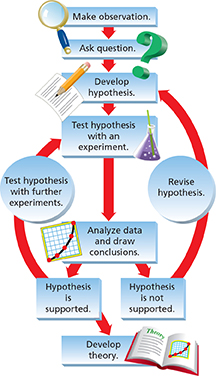Figure 7 outlines an example of a scientific method. Each step in the method shown involves specific skills, some of which you will be learning as you read this book. It is important to note that scientific methods can vary from case to case. For example, one scientist might follow the steps shown in Figure 7 in a different order, or another might choose to skip one or more steps.
Figure 7 A scientific method provides a useful strategy for solving problems.
Inferring Is an observation required in order for you to arrive at a question? What does this tell you about the strictness of the scientific method?
 d
dMaking Observations
Scientific investigations often begin with observations. An observation is information that you obtain through your senses. Repeatable observations are known as facts. For example, when you walk or run in the rain, you get wet. Standing in the rain leaves you much wetter than walking or running in the rain. You might combine these observations into a question: How does your speed affect how wet you get when you are caught in the rain?
Forming a Hypothesis
A hypothesis is a proposed answer to a question. To answer the question raised by your observations about traveling in the rain, you might guess that the faster your speed, the drier you will stay in the rain. What can you do with your hypothesis? For a hypothesis to be useful, it must be testable.
Testing a Hypothesis
Scientists perform experiments to test their hypotheses. In an experiment, any factor that can change is called a variable. Suppose you do an experiment to test if speed affects how wet you get in the rain. The variables will include your speed, your size, the rate of rainfall, and the amount of water that hits you.
Your hypothesis states that one variable, speed, causes a change in another variable, the amount of water that hits you. The speed with which you walk or run is the manipulated variable, or the variable that causes a change in another. The amount of water that you accumulate is the responding variable, or the variable that changes in response to the manipulated variable. To examine the relationship between a manipulated variable and a responding variable, scientists use controlled experiments. A controlled experiment is an experiment in which only one variable, the manipulated variable, is deliberately changed at a time. While the responding variable is observed for changes, all other variables are kept constant, or controlled.





